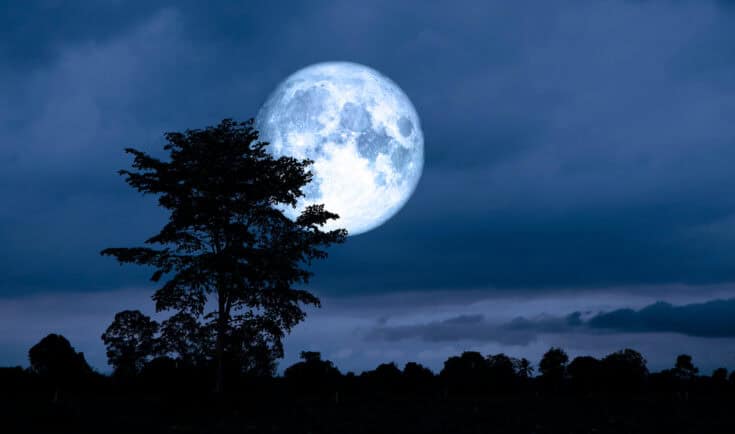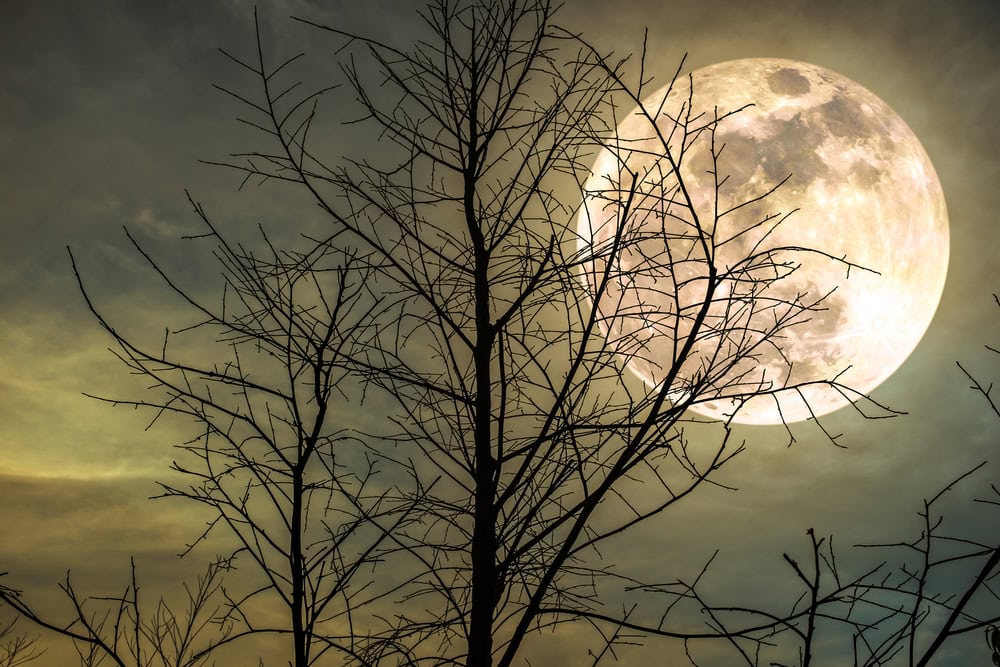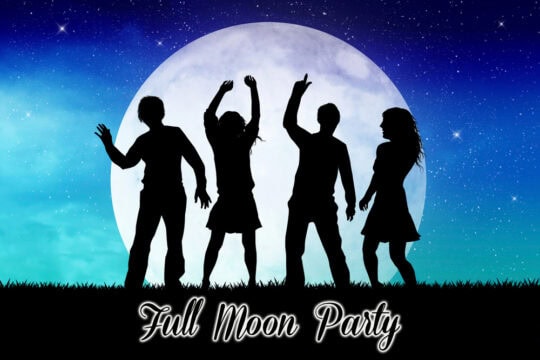
On Thursday, October 17th, the full moon will shine brightly in the Atlanta skies. It will be a Super Moon, which is perfect for amateur sky-gazers to enjoy — because you can’t miss it.
To your eyes, the moon will also appear full the night before and the night after peak fullness technically occurs — giving you three nights to view the Super Moon. Stick with us, as we tell you how to easily get a glimpse of this beautiful and uncommon celestial event.
A super moon happens when the moon’s orbit brings it closest to Earth at the same time the moon is full — making it appear about 17% larger and much brighter than an average moon, according to NASA.
The October full moon is also known as the Hunter’s Moon.
So this month, you get to see the Super Hunter’s Moon.
Fun Fact about the October full moon:
September’s full moon is usually known as the Harvest Moon — because it is typically the full moon closest to the date of the Autumnal Equinox. However, if the October full moon happens to occur closer to the equinox than September’s, then it is granted the name of Harvest Moon, and the September full moon is called the Corn Moon.

Image: Deposit Photos.
When & where to see the Super Hunter’s Moon in October
The moon reaches the exact moment of peak fullness at 12:26 p.m. on Thursday, October 17th, according to the Old Farmer’s Almanac.
This means you won’t get a chance to view the Super Moon at the exact moment of peak fullness, because it will occur in daylight hours.
But the moon will appear full to your eyes on three evenings in Atlanta.
♦ Wednesday, Oct. 16th — moonrise at 6:345 p.m. (97.4% full)
♦ Thursday, Oct. 17th — moonrise at 7:07 p.m. (99.9% full)
♦ Friday, Oct. 18th — moonrise at 7:44 p.m. (99 % full)
This info comes from MoonPhases.org and TimeAndDate.com
Moonrise is defined as the moment when the upper edge of the moon appears above the horizon.
Just like the sun, the moon rises in the eastern sky and sets in the west.
So if you have a clear view of the horizon, you’ll be able to watch the moon rise. And if your view of the eastern horizon is blocked by trees, as is common in Atlanta, you can wait a little longer for a view of the Super Moon through the trees, and eventually high in the sky above the tree line.
In general, you can view a Super Moon right from your own yard.
You can also use binoculars or a telescope to view the moon in more detail.
Interestingly, some astronomers say the full moon is their least favorite viewing time — because there are none of the shadows that reveal the craters and contours on the moon’s surface.
Fall of 2024 features 4 Super Moons in a row!
In 2024, you’ll have several chances to view a Super Moon.
- On August 19th, we’ll have the Rare Blue Super Moon.
- On September 18th, you can view the Super Harvest Moon. Plus, it will undergo a partial lunar eclipse.
- October 17th brings the Super Hunter’s Moon — the biggest, brightest Super Moon of 2024.
- November 15th marks the occasion of the Super Beaver Moon.
The full moon names for every month

- January – Wolf Moon
- February – Snow Moon
- March – Worm Moon
- April – Pink Moon
- May – Flower Moon
- June – Strawberry Moon
- July – Buck Moon
- August – Sturgeon Moon
- September – Harvest Moon (or Corn Moon)
- October- Hunter’s Moon (or Harvest Moon)
- November – Beaver Moon
- December – Cold Moon
Tips for hosting a Full Moon get-together

Lunar events are a fun reason to get a group of people together. You can hang out together outside, and enjoy the show, courtesy of Mother Nature.
Here are some tips to get you started:
- Pick a place where you have a good view of the night sky.
- Set up comfortable lawn chairs (recliners are best!) or spread out picnic blankets where guests can lie back for skygazing.
- You don’t need a crowd! It’s fine to share the experience with just one or two other people, for a peaceful and calming evening.
- Set the mood with music, candles, or lanterns.
- Dress for the weather. Skygazing in winter is a lot of fun when you’re bundled up and cozy.
- Don’t feed the mosquitoes. In the warm months, you may want to have bug spray or citronella torches on hand, and to cover up exposed skin.
- Plan around a theme. If you want to go all out, you can use the moon’s seasonal nickname to suggest a theme for snacks, drinks, decorations, etc. For example, how about strawberry daquiris in June?
Pin it or share it!

Check out our Complete Guide to Atlanta Fall Festivals & Fairs -- which covers the entire metro area and includes all the fairs and festivals from September thru November.
You may also be interested in:
- Discounts for Stone Mountain's Pumpkin Festival "Glow by Night" attraction
- Best pumpkin patches, corn mazes, and haunted attractions in 2024
- 2024 guide to apple festivals and U-pick orchards
- Discounts for the Buford Corn Maze & Haunted Forest
- Fall farmers markets around Atlanta
- Free and cheap things to do this week
- Over 100 Halloween events for spooky fun
- 30+ FREE trick-or-treat events for kids




Leave a Reply